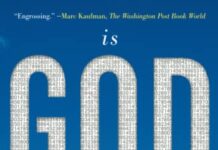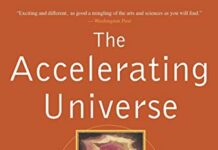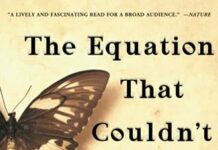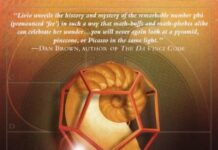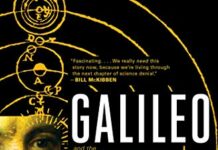
Ebook Info
- Published: 2013
- Number of pages: 352 pages
- Format: PDF
- File Size: 4.90 MB
- Authors: Mario Livio
Description
Drawing on the lives of five renowned scientists, Mario Livio shows how even these geniuses made major mistakes and how their errors were an essential part of the process of achieving scientific breakthroughs.WE ALL MAKE MISTAKES. Nobody’s perfect. Not even some of the greatest geniuses in history, as Mario Livio tells us in this marvelous story of scientific error and breakthrough. Charles Darwin, William Thomson (Lord Kelvin), Linus Pauling, Fred Hoyle, and Albert Einstein were all brilliant scientists. Each made groundbreaking contributions to his field—but each also stumbled badly. Darwin’s theory of natural selection shouldn’t have worked, according to the prevailing beliefs of his time. Not until Gregor Mendel’s work was known would there be a mechanism to explain natural selection. How could Darwin be both wrong and right? Lord Kelvin, Britain’s leading scientific intellect at the time, gravely miscalculated the age of the earth. Linus Pauling, the world’s premier chemist (who would win the Nobel Prize in chemistry) constructed an erroneous model for DNA in his haste to beat the competition to publication. Astrophysicist Fred Hoyle dismissed the idea of a “Big Bang” origin to the universe (ironically, the caustic name he gave to this event endured long after his erroneous objections were disproven). And Albert Einstein, whose name is synonymous with genius, speculated incorrectly about the forces that hold the universe in equilibrium—and that speculation opened the door to brilliant conceptual leaps. These five scientists expanded our knowledge of life on earth, the evolution of the earth itself, and the evolution of the universe, despite and because of their errors. As Mario Livio luminously explains, the scientific process advances through error. Mistakes are essential to progress. Brilliant Blunders is a singular tour through the world of science and scientific achievement—and a wonderfully insightful examination of the psychology of five fascinating scientists.
User’s Reviews
Editorial Reviews: From Publishers Weekly Astrophysicist and award-winning author Livio (The Golden Ratio) analyzes ruinous errors of five great scientific minds in the wake of their most prominent discoveries and how those errors have not only propelled scientific breakthroughs, but provide “insights…into the operation of the human mind.” Summoning Charles Darwin, Lord Kelvin, Linus Pauling, Fred Hoyle, and Albert Einstein, Livio argues there is no progress without lessons in humility. These thinkers succumbed to moments of fear, pride, stubbornness, and doubt common to all “mere mortals”—to the benefit of elucidating the evolution of life and the universe. Two-time Nobel prize-winning chemist Pauling’s flub of basic chemistry catalyzed the discoveries of Watson and Crick; Hoyle, a cosmologist who displayed “pigheaded, almost infuriating refusal” to give up his thoroughly refuted “steady state theory”, energized advanced studies of how we exist in space with his controversial ideas; and Einstein, “the embodiment of genius”, refused to give up on his cosmological constant, “the most famous fudge factor in the history of science.” With humor and precision, Livio reminds us: “Even the most impressive minds are not flawless; they merely pave the way for the next level of understanding.” (May) Review “Mario Livio sets the discoveries of five great scientists who were also remarkable personalities in their social context, showing how they emerged from confusion and controversy. His archival research allows him to debunk several myths that have been given currency through less thorough biographies. You don’t need to be a scientist to be fascinated by this scholarly, insightful and beautifully written book.” — Martin Rees, Astronomer Royal and author of From Here to Infinity: A Vision for the Future of Science“After reading Livio’s account, I look on the history of science in a new way. In every century and every science, I see brilliant blunders.” — Freeman Dyson ― The New York Review of Books”Scientists make mistakes all the time, but those bumps in the road are often smoothed out in the legends that surround the greatest discoverers. . . . Thoughtful, well-researched and beautifully written, Brilliant Blunders offers a distinctive — and far more truthful — perspective on the journey to scientific discovery.” — Marcia Bartusiak ― The Washington Post“Enlightening. . . . For many people, being a great scientist means being above error. . . . Livio’s book is a valuable antidote to this skewed picture. . . . Thanks to his deep curiosity, Livio turns Brilliant Blunders into a thoughtful meditation on the course of science itself.” — Carl Zimmer ― The New York Times Book Review”Elegant, entertaining, and instructive.” — Andrew Robinson ― The Lancet“It is said that genius is the ability to make all possible mistakes in the least amount of time. Livio’s genius is to show us just how much those mistakes have taught us.” — Adam Riess, Thomas Barber Professor of Physics and Astronomy, Johns Hopkins University, Nobel Laureate in Physics 2011“Taking risks is part of genius, and genius is not immune to bloopers. Mario Livio’s Brilliant Blunders leads us through the circumstances that surrounded famous gaffes. . . . Mr. Livio helps us see that such spectacular errors are opportunities rather than setbacks.” — Dr. Francis Collins, director of the National Institutes of Health“Mario Livio wears many hats: scientist, sleuth, storyteller. In Brilliant Blunders, a delightful intellectual synthesis, he reminds us that he’s also one of the best science writers in our galaxy.” — Steven Strogatz, professor of applied mathematics, Cornell University, and author of The Joy of X“In Brilliant Blunders, Mario Livio leaves no historical detail untold, as we re-walk the error-filled pathways along which human understanding of the universe slowly emerged.” — Neil deGrasse Tyson, Astrophysicist, American Museum of Natural History, and author of Space Chronicles: Facing the Ultimate FrontierMr. Livio is a gifted storyteller. . . .[He] shows how science works partly by feeding on past mistakes: Once recognized, the errors sparked creativity in other scientists. An incorrect view of the world is not simply a mistake; it’s a catalyst that leads to better understanding.” — Samuel Arbesman ― The Wall Street Journal”At last we have a book specifically devoted to scientific mistakes. . . . For someone who wants the whole story, Livio’s book is a page turner.” — Donald Simanek ― Physics Today“One of the most important things that distinguishes science from religion is that in science we (eventually) are happy to change our minds. This is called learning. As Mario Livio eloquently describes in this far-reaching and thoroughly enlightening book, many famous scientific advances involved either false starts or dead ends. In my own field, Einstein is purported to have said that inserting the cosmological constant into his equations of General Relativity was his ‘biggest blunder.’ In hindsight, as we find ourselves living in a Universe whose future may be determined by this quantity, most of us would now pay our eye teeth to have made such blunder!” — Lawrence M. Krauss, Director of the Origins Project at Arizona State University and Foundation Professor in the School of Earth and Space Exploration“Entertaining accounts of how five celebrated scientists went wrong. . . . An absorbing, persuasive reminder that science is not a direct march to the truth.” ― Kirkus Reviews”Astrophysicist Livio unmasks the flaws in the work of some of our greatest scientific minds in this meditation on the winding, unpredictable path of discovery.” — Anna Kuchment ― Scientific American”Livio’s usual knack at making sophisticated concepts accessible has been brought to bear on his book. . . . What comes through clearly, as is one of the author’s stated intentions, is that errors are part and parcel of the process and that science progresses, not always despite them, but also through them. . . . With its illustrious characters, interesting ideas and those blunders to marvel at, the book makes a fascinating read.” — Marianne Freiberger ― Plus magazine”Wide ranging and entertaining, Brilliant Blunders might be picked up by readers who have been fooled into doing so by the notion of blunders, but they will certainly enjoy it for its brilliance.” — Robert Schaefer ― New York Journal of Books”[Mario Livio is ] one of my favorite authors.” — Dan BrownThe blunders committed by the five geniuses profiled in this book should make us lesser beings feel better about ourselves. Mario Livio, an astrophysicist who writes popular science with Asimovian accessibility, doesn’t want to bring these men down. . . . Knowledge, Livio reminds us, transcends any one individual. It is relentless; in time it overcomes all obstacles, including the shortcomings of the very people dedicated to its advancement.” — Ariel Gonzalez ― The Miami Herald”You don’t have to be a science scholar to appreciate this book. . . . Brilliant Blunders shows that while scientists make mistakes, they ultimately get things right. And we’d better start paying attention.” — Curt Schleier ― Minneapolis Star-Tribune”Countless scientists have made major mistakes over the centuries, but Livio wisely focuses on gaffes from just five great minds: Pauling, Darwin, Einstein, astrophysicist Fred Hoyle and William Thomson, also known as Lord Kelvin. . . . Though Livio can only speculate on the reasons behind these errors, his clear and compelling writing reinforces the important contributions each of these men made to their fields. . . . Livio’s ultimate message is that blunders — even big ones — can play a role in scientific discovery.” — Allison Bohac ― ScienceNews“The stories of how these blunders came about, and what happened next, are extremely well researched, and they shed a welcome, informative, entertaining and sometimes new light on science as a deeply human activity.” — Len Fisher ― Physics World About the Author Mario Livio is an internationally known astrophysicist, a bestselling author, and a popular speaker who has appeared on The Daily Show, 60 Minutes, and NOVA. He is the author of the national bestseller Brilliant Blunders and other books. He lives in Baltimore, Maryland. Excerpt. © Reprinted by permission. All rights reserved. Brilliant Blunders PREFACE Throughout the entire period that I have been working on this book, every few weeks someone would ask me what my book was about. I developed a standard answer: “It is about blunders, and it is not an autobiography!” This would get a few laughs and the occasional approbation “What an interesting idea.” My objective was simple: to correct the impression that scientific breakthroughs are purely success stories. In fact, nothing could be further from the truth. Not only is the road to triumph paved with blunders, but the bigger the prize, the bigger the potential blunder. Immanuel Kant, the great German philosopher, wrote famously, “Two things fill the mind with ever new and increasing admiration and awe, the more often and steadily we reflect upon them: the starry heavens above me and the moral law within me.” In the time that has passed since the publication of his The Critique of Practical Reason (1788), we have made impressive progress in understanding the former; considerably less so, in my humble opinion, in elucidating the latter. It is apparently much more difficult to make life or mind comprehensible to itself. Nevertheless, the life sciences in general—and the research into the operation of the human brain in particular—are truly picking up speed. So it may not be altogether inconceivable after all that one day we will even fully understand why evolution has concocted a sentient species. While this book is about some of the remarkable endeavors to figure out life and the cosmos, it is more concerned with the journey than with the destination. I tried to concentrate on the thought process and the obstacles on the way to discovery rather than on the achievements themselves. Many people have helped me along the way, some maybe even unknowingly. I am grateful to Steve Mojzsis and Reika Yokochi for discussions on topics related to geology. I thank Jack Dunitz, Horace Freeland Judson, Matt Meselson, Evangelos Moudrianakis, Alex Rich, Jack Szostak, and Jim Watson for conversations on chemistry, biology, and specifically on Linus Pauling’s work. I am indebted to Peter Eggleton, John Faulkner, Geoffrey Hoyle, Jayant Narlikar, and Lord Martin Rees for helpful discussions on astrophysics and cosmology, and on Fred Hoyle’s work. I would also like to express my gratitude to all the people who provided me with invaluable materials for this book, and in particular to: Adam Perkins and the staff of the Cambridge University Library, for materials on Darwin and on Lord Kelvin; Mark Hurn of the Institute of Astronomy, Cambridge, for materials on Lord Kelvin and on Fred Hoyle; Amanda Smith of the Institute of Astronomy, Cambridge, for materials on Fred Hoyle and for processing photos related to Watson and Crick; Clifford Meade and Chris Petersen of the Special Collections Department of Oregon State University, for materials on Linus Pauling; Loma Karklins of the Caltech Archives, for material on Linus Pauling; Sarah Brooks from the Nature Publishing Group, for material on Rosalind Franklin; Bob Carswell and Peter Hingley for materials on Georges Lemaître from the Royal Astronomical Society; Liliane Moens of the Archives Georges Lemaître, for materials on Georges Lemaître; Kathryn McKee of St. John’s College, Cambridge, for materials on Fred Hoyle; and Barbara Wolff of the Albert Einstein Archives, Diana Kormos Buchwald of the Einstein Papers Project, Daniel Kennefick of the University of Arkansas, Michael Simonson of the Leo Baeck Institute, Christine Lutz of Princeton University, and Christine Di Bella of the Institute for Advanced Study for materials on Einstein. Special thanks are due to Jill Lagerstrom, Elizabeth Fraser, and Amy Gonigam of the Space Telescope Science Institute, and to the staff at the Johns Hopkins University Library for their continuous bibliographic support. I am grateful to Sharon Toolan for her professional help in preparing the manuscript for print, to Pam Jeffries for skillfully drawing some of the figures, and to Zak Concannon for cleaning some of the figures. As always, my most patient and supportive ally has been my wife, Sofie. Finally, I thank my agent, Susan Rabiner, for her relentless encouragement; my editor, Bob Bender, for his thoughtful comments; Loretta Denner, for her assistance during copyediting; and Johanna Li, for her dedication during the entire production of this book. Read more
Reviews from Amazon users which were colected at the time this book was published on the website:
⭐Mr. Livio has written very readable books on math and science in the past; however, this book on “colossal mistakes by great scientists that changed our understanding of the universe” may be the best of what he’s written so far. There is a joy and verve in his writing here that is beyond what he’s done before. This makes for a book that is not only interesting but also a pleasure to read.Granted, he’s chosen a particularly good topic: mistakes made by huge names in science–Darwin, Kelvin, Pauling, Hoyle, and Einstein. He handles it in an atypical way, however. Instead of using their well-known “blunders” to find a backdoor into criticism of these men as others have done in the past, Mr. Livio shows how the mistakes of great scientists often make perfect sense. In addition, he shows how these mistakes often open the door for others to make important breakthroughs.Consider Kelvin, often the poster child in scientific circles for someone who achieves much in his youth but then becomes hardened into his positions in old age even in the face of overwhelming evidence. Kelvin believed that the age of the earth could be no more than a few million years despite the fact that geological and evolutionary data during his lifetime indicated that the earth had to be much, much older. But what people often fail to understand about Kelvin is that he based his belief on thermodynamic calculations, calculations on which he was the acknowledged expert. More subtly, those people who threw the evidence of geology and biology and newly discovered radioactivity in his face often did not understand that even if their evidence spoke about the age of the earth, no known mechanism could account for the age of the sun which Kelvin had also calculated to be only a few millions years. In fact, it would be many decades before nuclear fusion would be understood well enough to determine that the age of the sun could also be billions of years and synch up with the assumed age of the earth. Kelvin based his mistake on calculable physics and, mistake though it may have been and intransigent as he certainly was, it encouraged other scientists to do significant work to refute him.Livio makes similar work of Darwin’s understanding of inheritable traits, Pauling’s work on the structure of DNA, Hoyle’s refutation of the Big Bang, and Einstein’s cosmological constant. He structures his book well, delivering a chapter on outlining the mistake (what it was and how a great mind could make such a mistake) and then following with a chapter that examines the impact of the mistake on the development of science.Livio also deserves credit for looking into primary sources to examine aspects of controversy about these so-called mistakes. In particular, he has a great section on the primacy debate on what is now known as Hubble’s Law between Edwin Hubble and Georges Lemaitre. In addition, he quite convincingly argues that Einstein never called the cosmological constant his “greatest blunder”. In fact, that is a story most of us know third-hand through a not-quite-reliable source.Because of its triumphs, many people look upon science as some kind of edifice of truth. Those involved in science, however, know that the power of science comes from its ability to advance by correcting mistakes and refining understanding. Because of that, the history of science is riddled with blind alleys and big blunders. Those things happen to be just as important to the development of science as what is currently accepted as accurate. Mr. Livio has done an excellent job of demonstrating this by pointing out the mistakes made by some of the greats. This is a book anyone interested in the history of science should read.
⭐If you are looking to laugh at the stupid mistakes made by some brilliant scientists you have come to the wrong place. But if you want to explore the history of modern science and get some insight into the thought processes of brilliant scientists you have reached your destination.Livio does talk about some ideas that were strongly supported by Darwin, Hoyle, Einstein, Pauling,and more. And he clearly differentiates between errors that were based on inability to test due to lack of advanced equipment from those that were due to “human psycological limitations.” Only the latter are termed blunders in this context.But all of that is really as aside to this book. What it really does is explore the minds of great scientists and put them in the context of their time. You get a glimpse of how their famous theories developed, the principles and people whose prior work formed the basis of those theories, the work that followed that revealed the errors – or sometimes correctness. And you get a good look at the personalities of these scientists and their contemporaries.Along the way you just might learn, or get a refresher on, modern scientific principals. Livio doesn’t ever talk down to his readers. He always explains these principals as though he knows you are well versed and is just trying to put things into context. But even for readers who have not delved deeply into these subjects his way of explaining is very accessible.The only time the book falls a little flat is when Livio introduces a bit of “pop” culture into the writing. This happens maybe once per chapter, and it always falls a little flat and feels forced. I grinned at the effort more than the actual joke. These are really only throw-away references so they won’t diminish your enjoyment of the book at all.I would not be surprised to find this book make its way into university science curricula as the main text for a “History of Science” course. It is certainly a lot better than the text I used some 40 years ago when I actually had to take a course with that title.
⭐Brilliant blunders? How can blunders be brilliant? Well they sometimes can if they are made by scientists of the calibre of Charles Darwin and Albert Einstein, or even lesser geniuses such as Linus Pauling and Lord Kelvin. The blunder itself can act as a catalyst and open up entirely new ways of looking at nature. In this book, the astrophysicist Mario Livio illustrates this by examining the cases of five iconic scientists from different disciplines – Darwin, Kelvin, Pauling, Einstein and Hoyle – whose work has transcended science and extended out to general culture. The nature of their blunders is different in each case and illustrates some universal human traits. They demonstrate that the road to discovery and innovation can be constructed even via the unlikely path of blunders.Darwin’s blunder was not to realise that his theory of evolution was incompatible with the blending theory of heredity that was accepted at the time. This implied that any variation with new characteristics that arose by chance would quickly be lost. His attempts to overcome this problem were misguided and he fell victim to what modern psychologists call the `illusion of confidence’, i.e. overestimating ones abilities. Nevertheless, the blunder paved the way for the mathematical theory of population genetics and the vindication of Mendel’s theory of inheritance. Kelvin calculated the age of the Earth to be far smaller than the evidence from geology suggested, not because he knew nothing about radioactivity (which actually makes rather little difference to the result), but because he refused to accept that there could be convection currents from the Earth’s core. His stubbornness stemmed from his knowledge that his mathematical abilities were undeniable and so he had total faith in his calculations. Pauling’s attempt to solve the structure of DNA resulted in a model that violated some basic principle of chemistry that even a first year undergraduate would have known. How could this possibly have happened? Well, Pauling consider himself in a race with teams in Cambridge and London and it is likely that in his haste to rush something into print he totally lost focus, relying instead on his previous success with models of proteins. His blunder spurred on the efforts of the other teams, particularly that of Crick and Watson. Hoyle was one of the originators of the `steady-state’ theory of the universe, in contrast to the Big Bang model. He was still defending this theory long after observational evidence had destroyed its credence. One reason for this may have been his isolation; he only worked with and had discussions with a close circle of friends. Einstein’s blunder was to introduce a new term – the cosmological constant – into the equations of general relativity to counteract gravity and so produce a static universe, only to remove it when the universe was found not to be static, but actually expanding. This blunder has led to exhaustive studies of the equations of general relativity and cosmological models, and the reinstatement of the cosmological constant in another context.This is a hugely entertaining and informative book constructed on rigorous research For example, by examining the Minute books of the Royal Astronomical Society, Livio definitively lays to rest the suggestion sometimes made that the discoverer of the expansion of the universe was Lemaitre and not Hubble. Another example is the famous, much quoted remark allegedly made by Einstein that the introduction of the cosmological constant was his `biggest blunder’. By examining all the relevant documents, the author shows that there is no evidence for this assertion, but considerable circumstantial evidence that it was made up by George Gamow, a physicist renowned for his sense of humour. The writing is informal but very clear, and difficult concepts are precisely explained without `dumbing down’. The text is backed up by numerous references and a bibliography for those readers who wish to explore further.
⭐Shame the front cover is damaged.
⭐You will find lots of historical facts about great scientists.
⭐This is an insightful book commenting on “blunders” by some of the greatest minds of the last 2 centuries —Darwin & Kelvin (19th); Einstein, Pauling, & Hoyle (20th).Mario Livio makes an excellent investigation into the nature of each of their mistakes, with some interesting conclusions. He brings some original ideas about what constitutes a scientific “mistake”, and especially the psychological reasons for these mistakes. I liked how they were arranged in decreasing order of severity — starting with Darwin’s misunderstanding of a serious concept of his own theory and ending with Einstein’s cosmological constant.I’d recommend this book to those interested in the history of science, or in the psychology of some of the greatest scientists. Cheers!
⭐Let me first say that I am a scientist, better a physicist. Thus, the topics were known to me as to the physical foundations. However, this book sheds some light on a few hidden corners of the scientific discoveries of Darwin, Newton, Kelvin, Pauling, Hoyle and Einstein that were basically unknown to me. It is not a book on the history of science, it is rather a book on the process of unveiling the secrets of the universe and the errors that the scientist, after all a human being, makes and sometimes is not ready to admit. In this sense, it is a brilliant book, written by someone who understands science and has compassion for the scientists as humans. A second thing that made me happy about this book is its unified view of physics and biology: they are related sciences, we know, but the author tells us why. I had never thought that without the universe the way it is we would never be talking about some fundamental problems the way we do. It sounds trivial, but, believe me, it is not. Read this book and you will find out what I mean!
Keywords
Free Download Brilliant Blunders: From Darwin to Einstein – Colossal Mistakes by Great Scientists That Changed Our Understanding of Life and the Universe in PDF format
Brilliant Blunders: From Darwin to Einstein – Colossal Mistakes by Great Scientists That Changed Our Understanding of Life and the Universe PDF Free Download
Download Brilliant Blunders: From Darwin to Einstein – Colossal Mistakes by Great Scientists That Changed Our Understanding of Life and the Universe 2013 PDF Free
Brilliant Blunders: From Darwin to Einstein – Colossal Mistakes by Great Scientists That Changed Our Understanding of Life and the Universe 2013 PDF Free Download
Download Brilliant Blunders: From Darwin to Einstein – Colossal Mistakes by Great Scientists That Changed Our Understanding of Life and the Universe PDF
Free Download Ebook Brilliant Blunders: From Darwin to Einstein – Colossal Mistakes by Great Scientists That Changed Our Understanding of Life and the Universe
